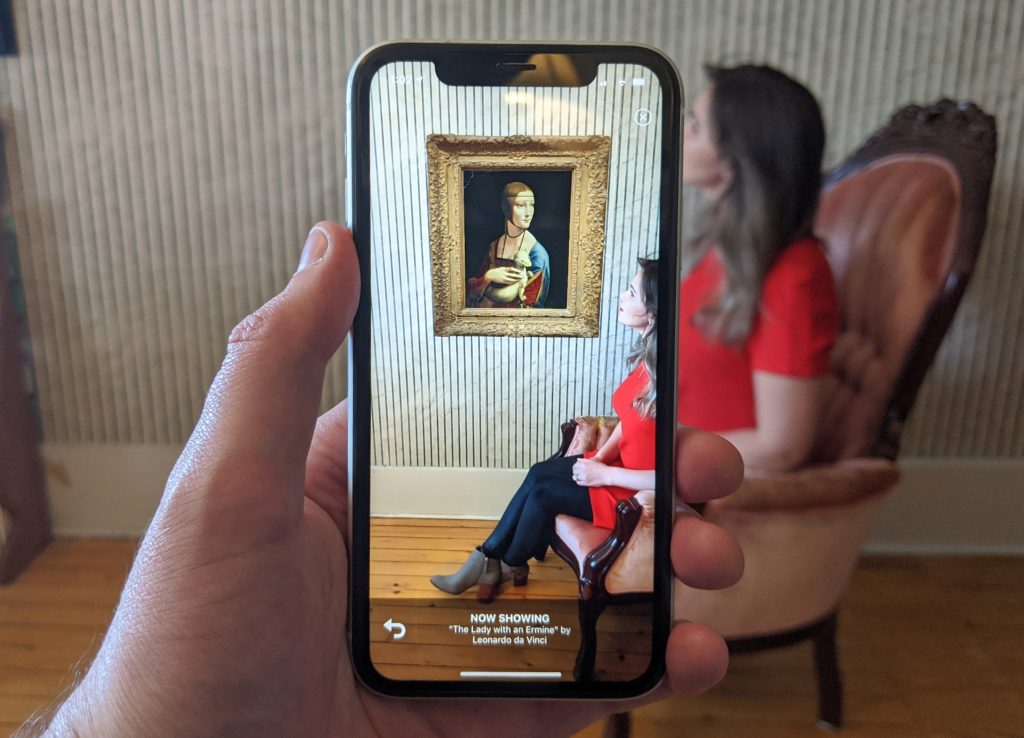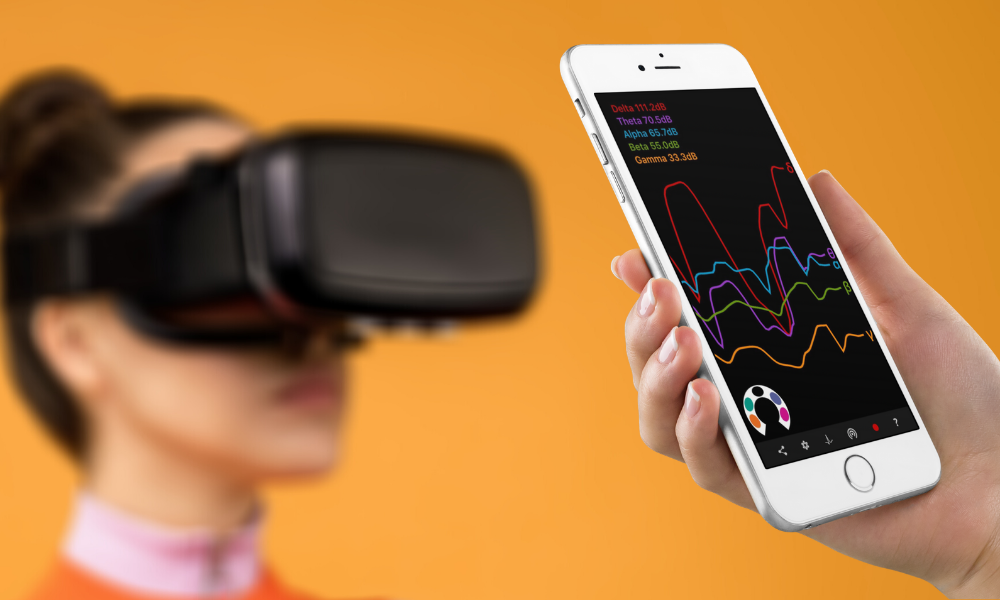May 9, 2020
Touring the Science Behind Cuseum’s AR “Museum From Home”

By: burgundy bug
Cuseum’s AR technology displaying “The Lady with Ermine” by Leonardo da Vinci on the wall of someone’s home
Source: Cuseum
Social distancing has stripped us of our face-to-face interactions and recreational forms of cultural enrichment. As we’re all adjusting to the new norm, we’ve had to find alternative sources to fill this void of extracurricular education.
In lieu of visiting a museum, you may be scrolling through photos of the last time you visited the Renwick Gallery or Philadelphia Museum of Art, wishing their were a more hands-on way to relive the experiences.
Consider your wish granted. Cuseum has recently announced the release of their augmented reality technology that allows users to engage with famous artwork and virtually display it in their own humble abode.
“In light of the COVID-19 pandemic and the widespread closure of museums across the world, the necessity of creating an alternative, remote way to experience art and culture has never been greater,” said Cuseum CEO and Founder Brendan Ciecko in the company’s recent press release. “In these unprecedented times, we’re helping people across the globe feel connected with works that bring them joy and inspiration. Just imagine experiencing your favorite artwork from the comfort of your own living room – we’re excited to make this a reality.”
Alongside their announcement, Cuseum released a 10-month study of the neuroscience behind how the human brain perceives art through AR, virtual reality, and other digital platforms in comparison to viewing the art physically.
With world-renowned neuroscientist at the Massachusetts Institute of Technology Dr. Pawan Sinha leading the team of neuroscientists, the researchers evaluated the emotive responses to original artworks v.s. the digital representations.
“The current EEG findings would suggest that aesthetic experience is not denigrated by a digital interface representation, and in fact, digital reproductions in the case of augmented reality are shown to improve the magnitude of brain activity compared to the viewing of the original works of art,” the researchers explained.
The Science Behind Engaging with Art Digitally
A woman equipped with a VR headset has her EEG activity read on an iPhone
Source: Cuseum
A handful of participants who had no background in art, nor were they close with anyone who had a background in art, were chosen to study the perception of paintings across various domains at the Museum of Fine Arts in Boston, Mass.
The participants were fitted with a Muse2headset to conduct EEG readings of their experiences while viewing art through AR, VR, two-dimensionally on an iPad, and face-to-face in the museum. The researchers also recorded EEG activity while participants stared at a “blank wall” to get a baseline reading, which factored out individual differences between readings that may not have been related to the art experience.
Each session within the respective environments lasted one minute while the participants remained relaxed, seated, and as stationary as possible. After every session, participants fulfilled a survey where they described as many details as they could remember from the painting.
Furthermore, each session entailed viewing a different, random work of art with thick brushstrokes that had either been classified as an impressionist landscape, impressionist portrait, or abstract.
Participants were also asked to complete a survey of how well they remembered the paintings during a one-week follow up, then were invited back to the museum to rate their own recollections of the artwork.
How Digital Representations of Art Measure Up to “Real” Experiences
Peak magnitude of EEG activation was greatest in the VR setting, with AR and the real museum gallery coming in at a neck-and-neck second and third place, respectively.
Viewing the art two-dimensionally on the iPad yielded the lowest EEG activation, but the analysis shows the differences are only truly significant when comparing the 2D experience to AR, or AR v.s. VR.
When assessing the participant’s surveys completed after each session, AR, VR, and real museum gallery experiences were on par with each other in terms of short-term memory recall. The 2D experiences had the least clear short-term memory results.
AR was superior to all other viewing experiences in terms of long-term memory recall.
Let’s Talk About EEG Activity
Alpha activity recorded during an EEG is characterized as a relaxed state driven by sensory perception and passive memory recall.
By contrast, Gamma activity, the fastest frequency recorded, is characterized by hyperactivity, indicative of information processing taking place across different brain areas.
“Together, the alpha’s indication of subdued relaxation in direct contrast to gamma’s indication of high concentration, tell a well-rounded story of a participant’s experience in all four of the experimental environments,” the study explains.
The greatest differences in gamma activity are apparent when comparing the AR sessions to the 2D ones and the AR to the VR sessions, but the greatest differences in alpha activity only took place at one of the Muse2headset sensors.
“However, gamma data show that the brain processes information similarly to observing a real painting hung in a gallery than it does in any of the three digital environments,” the study clarifies. “… In summary, technology seems to be on par with an authentic museum experience in terms of information processing, particularly when viewing a painting in augmented reality.”
In Conclusion
Cuseum’s AR technology displaying “The Scream” by Edward Munch above a living room couch
Source: Cuseum
Cuseum is delivering the beauty, awe, and wonder of a real art museum gallery to your doorstep through AR technology.
While this need for cultural enrichment is ever-present during a time period where most of individuals around the globe haven’t left their home for nearly two months, this technology is applicable far beyond the current state of the world.
Think of all the individuals who are in a nursing home or can’t leave where they reside, for whatever the reason may be. There have already been cases of VR providing therapeutic experiences for such individuals, and they’ve had a positively profound impact.
How Virtual Reality Could Help Treat Alzheimer’s and Chronic Pain
Source: How Virtual Reality Could Help Treat Alzheimer’s and Chronic Pain | Bloomberg
While the technology in and of itself appears beneficial, the accompanying study solidified the point and added context to how AR and VR art-viewing experiences fare in comparison with a real museum gallery.
“Critics have long debated the role and impact of technology in the display, consumption, and creation of art,” Ciecko began. “Until now, there has never been an empirical study that looks beyond the opinion and taps into neurological activity to understand the human brain’s response to art experienced in real-life compared to virtually. “
“Today marks a new milestone in our understanding of how people receive and react to art through digital channels, and offers immutable support for continuing to make art accessible in all formats.”
Head on over to Cuseum’s website to learn more about how you can participate in the AR “Museum from Home,” or visit here to read their study.
Be sure to follow Cuseum on Twitter and Instagram to keep up with their latest developments.
Interested in having content featured in an upcoming blog post or issue of The Burgundy Zine? Head on over to the submissions page!
For all other inquiries, please fulfill a contact form.




